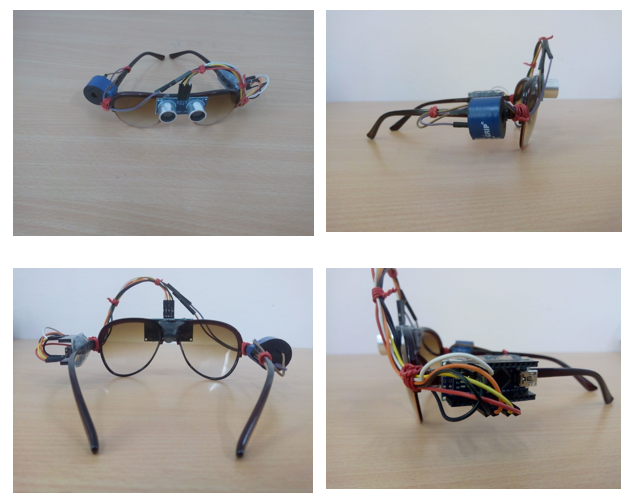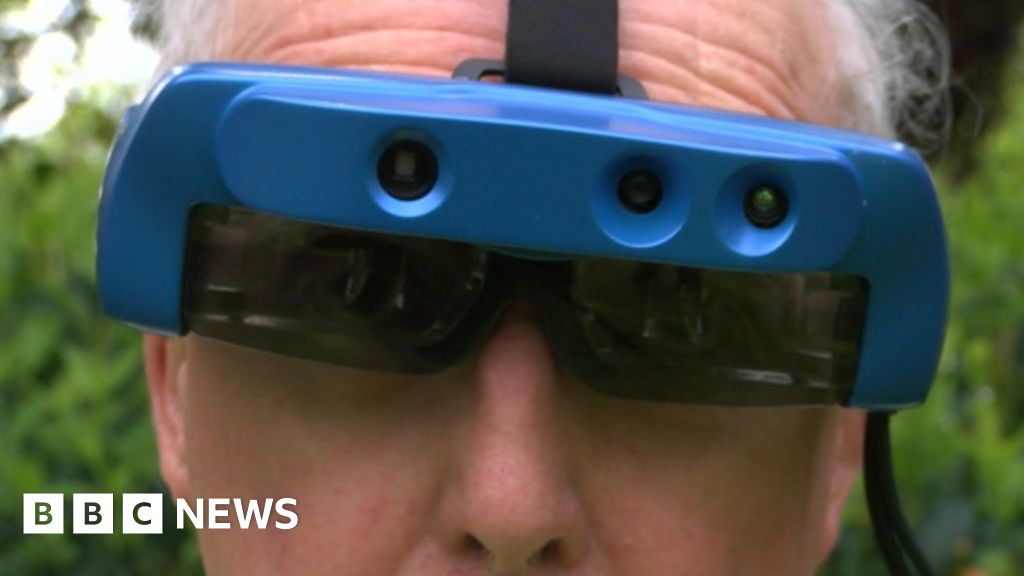Empowering Freedom With Assistive Modern Technology for the Blind
The assimilation of assistive modern technology for people that are blind or visually impaired stands for a considerable innovation in promoting freedom and improving top quality of life. With a variety of devices-- from display readers to innovative responsive tools-- these modern technologies not just facilitate navigating and communication but additionally promote social incorporation and participation in various facets of life. As we explore the varied kinds of assistive devices and their real-world applications, it ends up being clear that the influence is profound. The evolution of this innovation increases vital inquiries regarding access and future advancements that necessitate further assessment.
Comprehending Assistive Innovation
Although assistive innovation has evolved considerably for many years, its essential purpose remains the very same: to boost the lifestyle for people with disabilities, particularly those that are aesthetically impaired or blind. This modern technology includes a wide series of devices and gadgets that assist in self-reliance and functionality in day-to-day activities.
Assistive modern technology can be classified into high-tech and low-tech remedies, each created to satisfy details needs. Modern devices usually include software program applications, specialized hardware, and adaptive tools that utilize innovative modern technology to supply assistance in various contexts. Alternatively, low-tech options might entail everyday products that are modified to improve availability, such as magnifiers or tactile pens.
The integration of assistive innovation into the lives of individuals who are blind or visually harmed not just advertises autonomy yet also fosters social addition and involvement in expert and academic environments. By leveraging these technologies, customers can navigate their surroundings, accessibility information, and connect successfully, consequently improving their general quality of life. Recognizing assistive modern technology is critical for supporters, caretakers, and professionals that intend to support people in optimizing their possible and accomplishing better independence.
Sorts Of Assistive Gadgets
Assistive devices for the aesthetically damaged and blind are crucial devices that improve daily living by attending to details obstacles encountered by users. These devices can be broadly categorized right into three primary kinds: optical devices, digital tools, and sensory tools.

Sensory tools, such as Braille screens and tactile maps, offer alternative means to receive details. Braille presents convert electronic message right into Braille, making it possible for users to check out touch. Responsive maps offer spatial understanding via raised lines and appearances, permitting far better environmental recognition.
With each other, these assistive tools equip individuals with visual impairments to engage more completely with their surroundings, advertising better freedom and confidence in everyday tasks.

Effect on Every Day Life
The assimilation of assistive modern technology into the day-to-days live of people that are blind or aesthetically damaged dramatically enhances their ability to navigate and engage with the world around them. Tools such as screen visitors, Braille displays, and mobile applications promote accessibility to info, allowing customers to engage with digital material, communicate effectively, and manage daily jobs separately.
Additionally, technologies like wise glasses and navigation applications supply real-time assistance in unknown atmospheres, boosting wheelchair and self-confidence. These devices allow individuals to identify challenges, read signs, and even acknowledge faces, hence promoting a feeling of freedom in public rooms. Additionally, home automation systems, which can be controlled through voice commands, permit individuals to manage their living environments better, improving comfort and security.
The impact of assistive innovation prolongs past useful jobs; it Extra resources advertises social addition and psychological health. By bridging the void in between people and their environments, these innovations equip customers to take part fully in community tasks, seek instructional chances, and participate in purposeful connections. Eventually, the innovation of assistive modern technology is instrumental in redefining the possibilities for people that are visually impaired or blind, causing an extra inclusive and obtainable culture.
Success Stories and Endorsements

One more effective testimony comes from Mark, a recent university graduate that utilized display reading software throughout his scholastic journey. This innovation allowed him to access program materials and take part in discussions, ultimately bring about his successful transition right into the workforce. Mark credit scores assistive modern technology for equipping him to achieve his occupation objectives, stressing its function in leveling the having fun field for people with aesthetic impairments.
Furthermore, recreation center have actually reported raised involvement in their programs thanks to the intro of available electronic platforms. These systems have made it easier for individuals to connect, share resources, and support each other. These success stories collectively highlight the profound result of assistive innovation in cultivating independence, boosting quality of life, and breaking down obstacles for the aesthetically impaired and blind community.
Future Patterns in Assistive Tech
Emerging innovations are positioned to revolutionize the landscape of assistive technology for individuals who are visually impaired or blind. Innovations in artificial knowledge (AI) and maker learning are enhancing the abilities of tools, making it possible for even more intuitive individual experiences. As an example, AI-driven applications are progressively able to read and recognize things text aloud in real-time, providing individuals with beneficial information regarding their environments.
Furthermore, developments in wearable technology are developing new chances for self-reliance. Smart glasses furnished with enhanced fact functions can overlay essential details pop over here onto the customer's visual field, assisting in navigating and communication with the atmosphere. The combination of Internet of Points (IoT) tools is simplifying availability in wise homes, enabling customers to manage home appliances and obtain alerts via voice commands or responsive user interfaces.
The advancement of braille display screens and responsive comments systems is also rising, promoting accessibility to digital material and improving interaction. As these innovations continue to evolve, they guarantee to enhance everyday living, instructional possibilities, and employment leads for individuals with aesthetic impairments. Constant cooperation between technologists, individuals, and campaigning for teams will be crucial in making certain these developments fulfill the requirements of the area successfully.
Verdict
In final thought, assistive technology plays a pivotal function in boosting the freedom of individuals who are aesthetically damaged or blind. By providing vital devices and sources, these technologies facilitate improved navigation, communication, and accessibility to information, consequently promoting autonomy and self-esteem. The transformative effect of assistive devices not only advertises efficient interaction with the atmosphere however additionally urges social addition and participation in numerous aspects of life, eventually equipping users to thrive within their communities.
The combination of assistive modern technology for people that are visually impaired or blind represents a considerable advancement in fostering freedom and enhancing high quality of life.The combination of assistive innovation into the lives of individuals that are blind or aesthetically harmed not just advertises freedom however also fosters social incorporation and participation in instructional and expert atmospheres. Eventually, the advancement of assistive innovation is instrumental in redefining the opportunities for individuals that are blind or aesthetically damaged, leading to an extra comprehensive and easily accessible culture.
Many individuals that are visually damaged or blind have shared motivating success tales that highlight the transformative influence of assistive modern technology on their lives.In verdict, assistive modern technology plays a crucial function in boosting the self-reliance of individuals that are aesthetically damaged or blind.